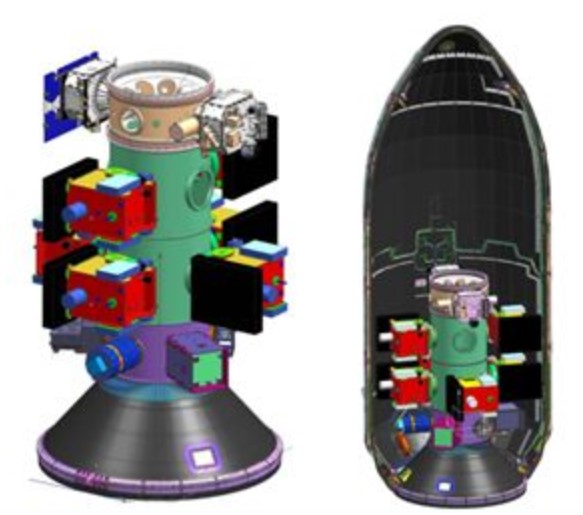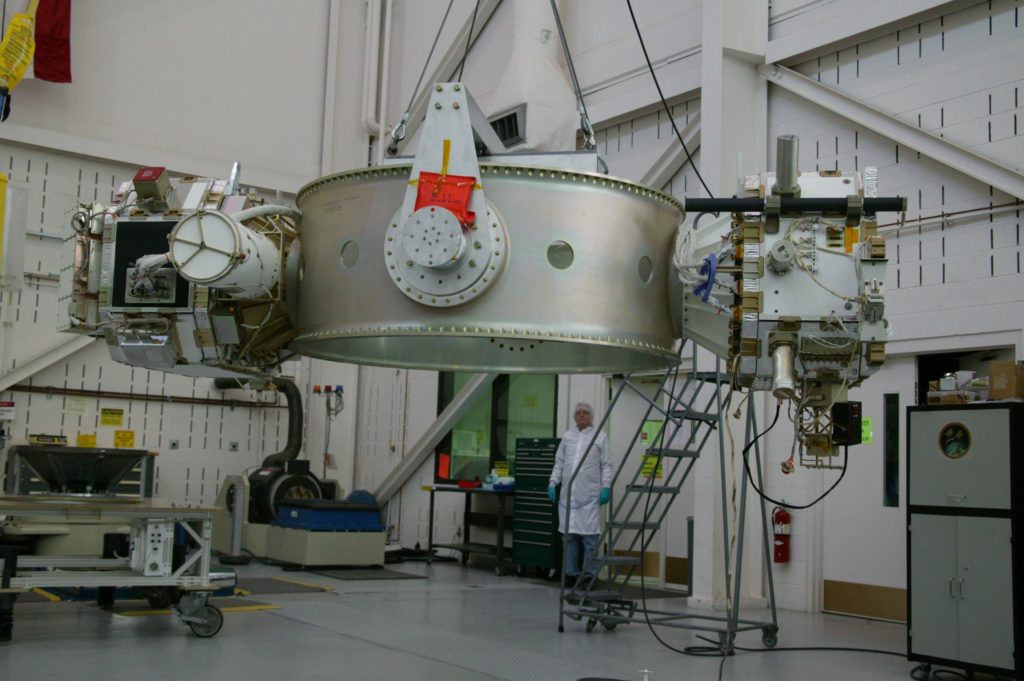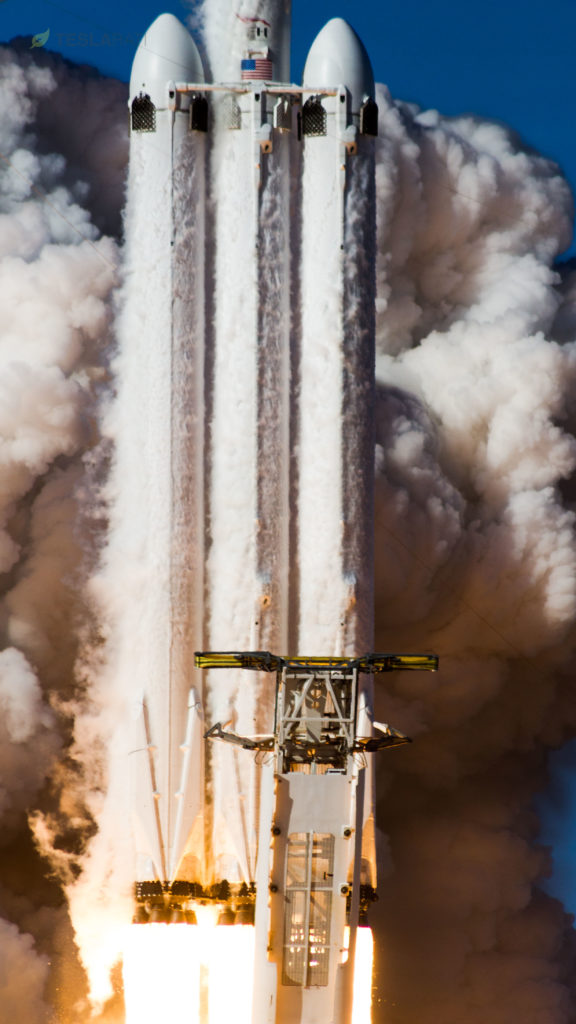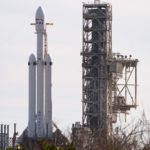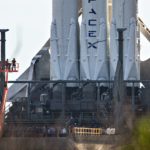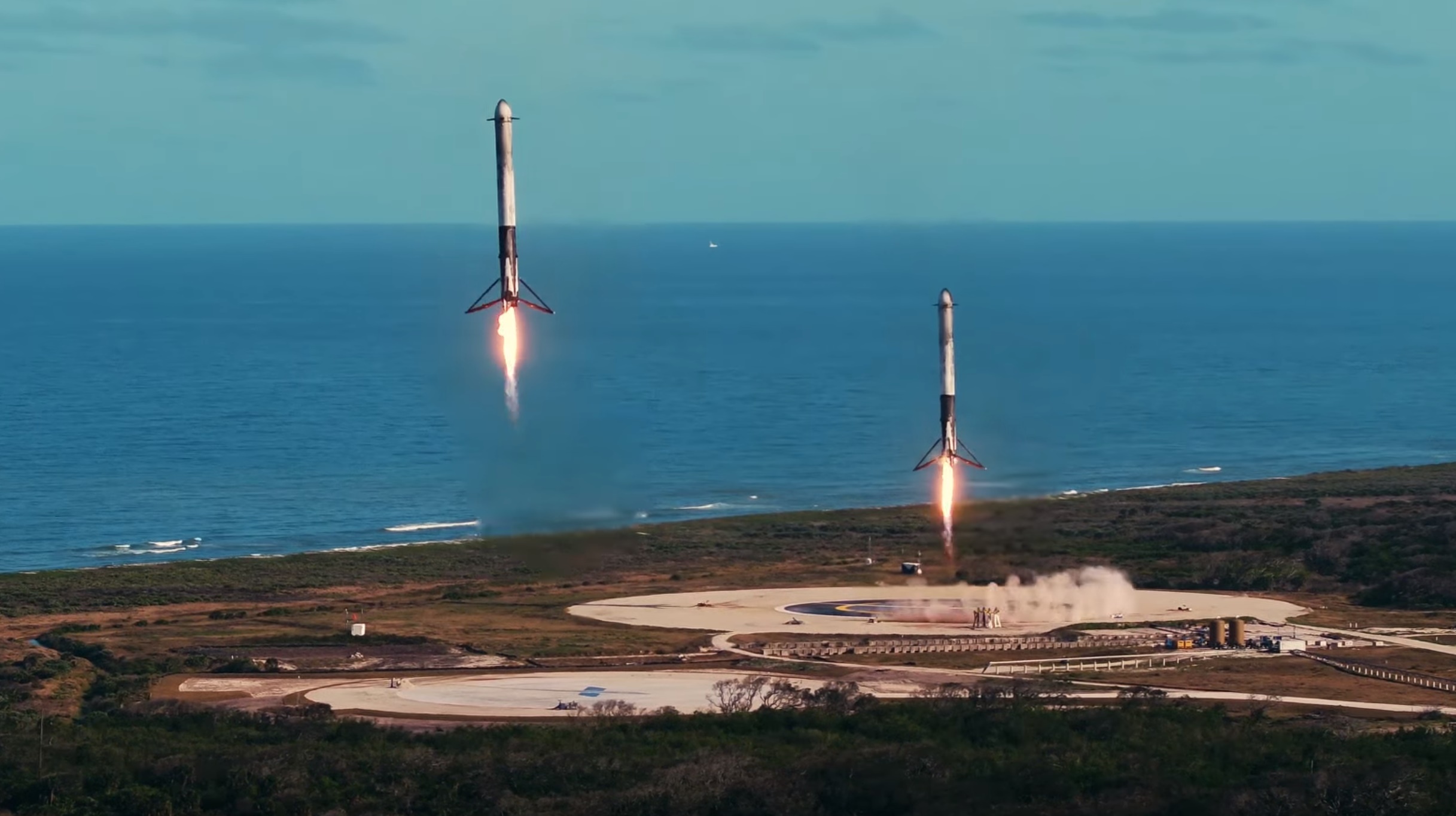
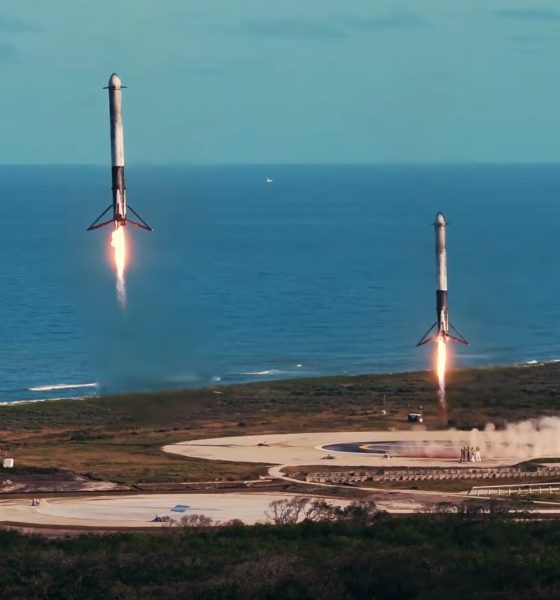
News
SpaceX Falcon Heavy with Block 5 rockets targets November launch debut
According to several of its satellite passengers, SpaceX’s second launch of Falcon Heavy – this time with three Falcon 9 Block 5 boosters – is understood to be targeted for no earlier than November 2018 and will mark the first commercial mission for the world’s most powerful operational rocket.
Under the blanket label Space Test Program-2 (STP-2), Falcon Heavy’s first operational mission will be conducted for the US Air Force and see 25 various spacecraft – some weighing as much as 500 kilograms – launched into an equally varied selection of orbits, requiring a complex series of restarts and burns for the rocket’s upgraded Block 5 second stage. STP-2 also includes a huge 5000-kilogram ballast mass as a result of the decision to fly the mission as a demonstration of Falcon Heavy instead of a less powerful but cheaper and simpler single-booster Falcon 9. The total mass of all 25 payloads is likely far beneath the powerful rocket’s actual capabilities, as are the performance and propellant reserves required for the upper stage to inject different spacecraft into a number of orbits, hence the inclusion of so much dead mass.

Falcon 9 Block 5 shows off its interstage heat shielding and titanium grid fins. Falcon Heavy’s three boosters will likely look nearly identical. (Tom Cross)
Of those 25 distinct payloads, a number even include their own co-passenger satellites and experiments and have orbit requirements ranging from a basic circular low Earth orbit (~700km) to an odd, elliptical orbit with ends at 6000 and 12000km. For Falcon Heavy’s second flight, SpaceX will be fielding three highly reusable Block 5 boosters and a Block 5 upper stage with upgrades that enable the vehicle to operate far longer on orbit and reignite its Merlin Vacuum engine three or more times.
- SpaceX’s second Falcon Heavy launch will either be the USAF’s STP-2, a collection of smaller satellites, or Arabsat 6A, a large communications satellite. (USAF)
- One group of STP-2 passengers, known as DSX, has been awaiting launch for more than eight years. (USAF)
- Falcon Heavy explodes off of Pad 39A in a spectacle of fire, Roadster in tow. (Tom Cross)
Unlikely to seriously tax Falcon Heavy’s brute-force payload lifting capabilities even with five metric tons of ballast, STP-2 will still be a lengthy and complicated endeavor for SpaceX’s Falcon upper stage – perhaps the most complex the company has yet to attempt. However, above all else, the most difficult aspect of the USAF STP-2 mission is almost certainly the comparatively mundane act of coordinating dozens of wildly different satellites and spacecraft from an equally varied number of different and geographically disparate institutions, companies, and government agencies, all of which must be ready for launch and attached to the same SpaceX payload adapter at roughly the same time to prevent mothballing launch delays.
RELATED: Reliving SpaceX Falcon Heavy: A press photographer’s memoir, not so much a blog post
- Falcon Heavy as seen a day before launch, February 5. (Tom Cross)
- All nine Merlin 1Ds displayed with their adorable cozies. (Tom Cross/Teslarati)
- Falcon Heavy’s stunning dual side booster recovery. (SpaceX)
SpaceX’s first Falcon Heavy completed its spectacularly successful debut earlier this year with a mission that saw CEO Elon Musk’s own Tesla Roadster launch into orbit around the sun and culminated in the truly extraordinary near-simultaneous landings of the rocket’s two flight-proven side boosters. Those boosters both completed their first launches in 2016, nearly two years prior to their second and final flights, and the reinforced center core was built as a new but now-outdated Block 3, lessening the blow from its failure to land aboard the drone ship Of Course I Still Love You after separating from the upper stage. Like all Block 5 versions of Falcon, the second Falcon Heavy’s Block 5 boosters should be expected to support a number of launches before retirement, ranging from several to as many as 100.

News
Tesla FSD fleet is nearing 7 billion total miles, including 2.5 billion city miles
As can be seen on Tesla’s official FSD webpage, vehicles equipped with the system have now navigated over 6.99 billion miles.

Tesla’s Full Self-Driving (Supervised) fleet is closing in on almost 7 billion total miles driven, as per data posted by the company on its official FSD webpage.
These figures hint at the massive scale of data fueling Tesla’s rapid FSD improvements, which have been quite notable as of late.
FSD mileage milestones
As can be seen on Tesla’s official FSD webpage, vehicles equipped with the system have now navigated over 6.99 billion miles. Tesla owner and avid FSD tester Whole Mars Catalog also shared a screenshot indicating that from the nearly 7 billion miles traveled by the FSD fleet, more than 2.5 billion miles were driven inside cities.
City miles are particularly valuable for complex urban scenarios like unprotected turns, pedestrian interactions, and traffic lights. This is also the difference-maker for FSD, as only complex solutions, such as Waymo’s self-driving taxis, operate similarly on inner-city streets. And even then, incidents such as the San Francisco blackouts have proven challenging for sensor-rich vehicles like Waymos.
Tesla’s data edge
Tesla has a number of advantages in the autonomous vehicle sector, one of which is the size of its fleet and the number of vehicles training FSD on real-world roads. Tesla’s nearly 7 billion FSD miles then allow the company to roll out updates that make its vehicles behave like they are being driven by experienced drivers, even if they are operating on their own.
So notable are Tesla’s improvements to FSD that NVIDIA Director of Robotics Jim Fan, after experiencing FSD v14, noted that the system is the first AI that passes what he described as a “Physical Turing Test.”
“Despite knowing exactly how robot learning works, I still find it magical watching the steering wheel turn by itself. First it feels surreal, next it becomes routine. Then, like the smartphone, taking it away actively hurts. This is how humanity gets rewired and glued to god-like technologies,” Fan wrote in a post on X.
News
Tesla starts showing how FSD will change lives in Europe
Local officials tested the system on narrow country roads and were impressed by FSD’s smooth, human-like driving, with some calling the service a game-changer for everyday life in areas that are far from urban centers.

Tesla has launched Europe’s first public shuttle service using Full Self-Driving (Supervised) in the rural Eifelkreis Bitburg-Prüm region of Germany, demonstrating how the technology can restore independence and mobility for people who struggle with limited transport options.
Local officials tested the system on narrow country roads and were impressed by FSD’s smooth, human-like driving, with some calling the service a game-changer for everyday life in areas that are far from urban centers.
Officials see real impact on rural residents
Arzfeld Mayor Johannes Kuhl and District Administrator Andreas Kruppert personally tested the Tesla shuttle service. This allowed them to see just how well FSD navigated winding lanes and rural roads confidently. Kruppert said, “Autonomous driving sounds like science fiction to many, but we simply see here that it works totally well in rural regions too.” Kuhl, for his part, also noted that FSD “feels like a very experienced driver.”
The pilot complements the area’s “Citizen Bus” program, which provides on-demand rides for elderly residents who can no longer drive themselves. Tesla Europe shared a video of a demonstration of the service, highlighting how FSD gives people their freedom back, even in places where public transport is not as prevalent.
What the Ministry for Economic Affairs and Transport says
Rhineland-Palatinate’s Minister Daniela Schmitt supported the project, praising the collaboration that made this “first of its kind in Europe” possible. As per the ministry, the rural rollout for the service shows FSD’s potential beyond major cities, and it delivers tangible benefits like grocery runs, doctor visits, and social connections for isolated residents.
“Reliable and flexible mobility is especially vital in rural areas. With the launch of a shuttle service using self-driving vehicles (FSD supervised) by Tesla in the Eifelkreis Bitburg-Prüm, an innovative pilot project is now getting underway that complements local community bus services. It is the first project of its kind in Europe.
“The result is a real gain for rural mobility: greater accessibility, more flexibility and tangible benefits for everyday life. A strong signal for innovation, cooperation and future-oriented mobility beyond urban centers,” the ministry wrote in a LinkedIn post.
News
Tesla China quietly posts Robotaxi-related job listing
Tesla China is currently seeking a Low Voltage Electrical Engineer to work on circuit board design for the company’s autonomous vehicles.

Tesla has posted a new job listing in Shanghai explicitly tied to its Robotaxi program, fueling speculation that the company is preparing to launch its dedicated autonomous ride-hailing service in China.
As noted in the listing, Tesla China is currently seeking a Low Voltage Electrical Engineer to work on circuit board design for the company’s autonomous vehicles.
Robotaxi-specific role
The listing, which was shared on social media platform X by industry watcher @tslaming, suggested that Tesla China is looking to fill the role urgently. The job listing itself specifically mentions that the person hired for the role will be working on the Low Voltage Hardware team, which would design the circuit boards that would serve as the nervous system of the Robotaxi.
Key tasks for the role, as indicated in the job listing, include collaboration with PCB layout, firmware, mechanical, program management, and validation teams, among other responsibilities. The role is based in Shanghai.
China Robotaxi launch
China represents a massive potential market for robotaxis, with its dense urban centers and supportive policies in select cities. Tesla has limited permission to roll out FSD in the country, though despite this, its vehicles have been hailed as among the best in the market when it comes to autonomous features. So far, at least, it appears that China supports Tesla’s FSD and Robotaxi rollout.
This was hinted at in November, when Tesla brought the Cybercab to the 8th China International Import Expo (CIIE) in Shanghai, marking the first time that the autonomous two-seater was brought to the Asia-Pacific region. The vehicle, despite not having a release date in China, received a significant amount of interest among the event’s attendees.
